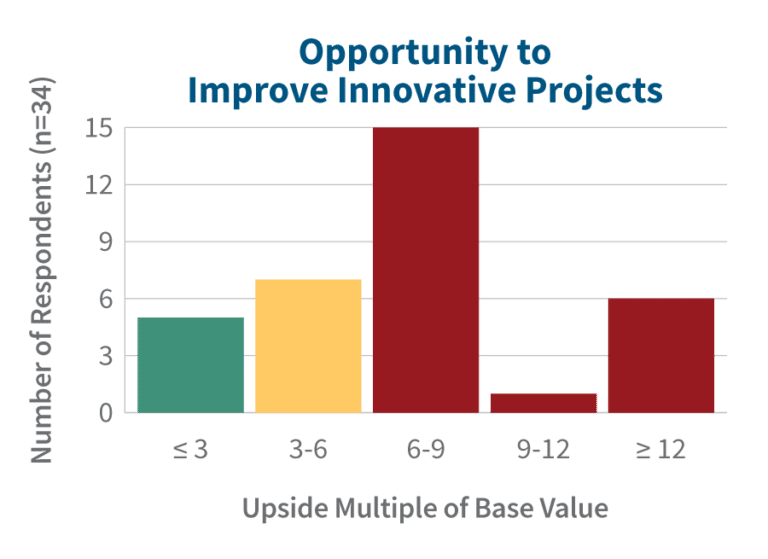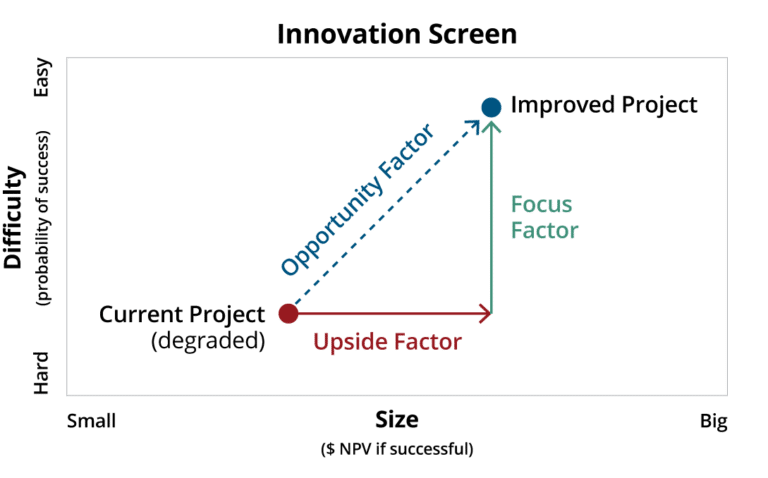Benchmarking Improvements in Portfolio Returns
By David Matheson  5 min read
5 min read
At a recent workshop, a group of 35 R&D and innovation executives in industries ranging from automotive to healthcare came together to benchmark improvement potential. Each selected a real example project from their portfolio and applied an estimation model based on benchmarks and experience developed at DuPont Safety & Construction with SmartOrg. The average improvement opportunity across this diverse group was 8.1 times the current return on innovation!
Fifteen percent of the group found improvement opportunities for their selected project to be three times or less. However, a full 65% of the participants found improvements in their sample projects greater than six times, and 18% found improvements great than 12 times!


Then declutter. Get rid of the small projects that, however good, won’t move the needle on growth. Focus the attention of the rare and the powerful on projects with breakthrough upside and significant innovation challenges. Determine what level of resources projects actually need (not what they are asking for), based on the innovation challenges they actually face.